-
 Ever Wondered How to Make Paneer at Home? Here is the Complete Guide to Take Out Soft and Creamy Paneer from Milk at Home (2021)
Ever Wondered How to Make Paneer at Home? Here is the Complete Guide to Take Out Soft and Creamy Paneer from Milk at Home (2021)
-
 Want More Tantalizing Breakfast Ideas? Here are 6 Scrumptious Egg Recipes for Breakfast That Will Make You Want to Eat Eggs All Day (2020)
Want More Tantalizing Breakfast Ideas? Here are 6 Scrumptious Egg Recipes for Breakfast That Will Make You Want to Eat Eggs All Day (2020)
-
 How to Increase Weight: Foods to Include in Your Diet for Your Weight Gain Journey + Tips for Gaining Weight (2020)
How to Increase Weight: Foods to Include in Your Diet for Your Weight Gain Journey + Tips for Gaining Weight (2020)
What are Millets?

Millets are one of India's oldest crops, so ancient that references of the same can be seen in Yajurveda texts. This little detail indicates that people cultivated millets around 1200 BCE in India. Not just India, they are also grown in East Asia, East Africa, and West Africa. They can grow in demanding climates with little rain and barely any ground fertility, making them the crop of choice for farmers in Asian and African countries. Besides, they also do not need pesticides since pests do not bother with these for some reason.
Coming to nutrients, millets are rich in iron, phosphorus, and calcium. They are also low glycemic, meaning that it takes more time to digest, making them an ideal grain of choice to control diabetes and weight loss.
Millets can be naked grains with barely any husk or husked grains.
Unhusked Millets
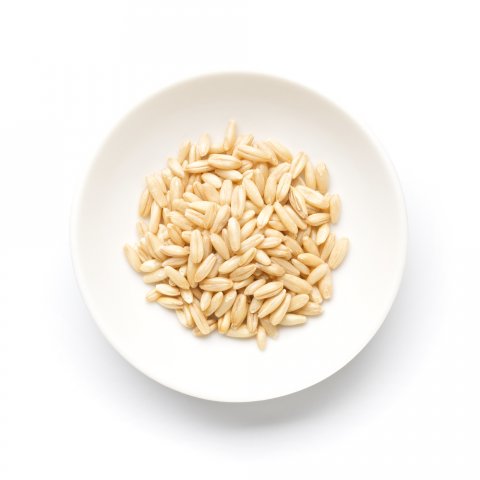
Millets without the hard, indigestible husks that are usually found in grains come under these criteria. They do not require much processing and hence easier available than their counterparts. Jowar, Ragi, and Bajra are examples of this kind of grain. Farmers prefer to cultivate these grains than the husked ones due to the ease of use and the time saved during the dehusking process.
Husked Millets
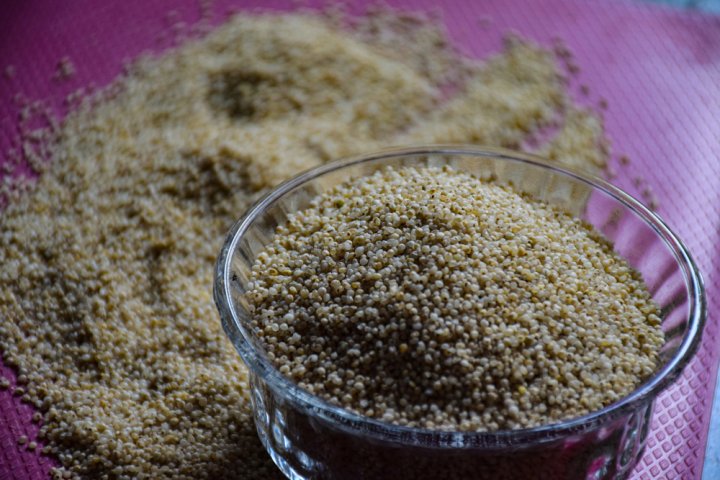
Husked millets have a hard shell surrounding them. Their seed coat is indigestible; hence needs to be removed first and then cleaned of any debris. Since it was done exclusively by hand, it wasn't a grain of choice among the farmers and the general public. The green revolution prioritised rice and wheat among the other crops, which also played a part in its downfall.
Types of Millets

There are several types of millets in existence. Each one of them has a different taste and texture. They also vary in nutrient level and content.
Millets are very nutritional when compared to rice and hence can be consumed regularly. However, 3-4 times a week should work since overconsumption is related to indigestion, loss of appetite, bloating, etc. If you already suffer from thyroid issues, you might want to reduce millets' usage since they can cause thyroid malfunction. Also, try to include different varieties of millets in your regular diet to reap their benefits.
Pearl Millet

Pearl millet is rich in iron, phosphorus, protein, magnesium, etc. Due to its healthy composition of carbohydrates and fibre, it is a high energy cereal. It is crucial for a healthy immune system and relaxes your body, which is essential for insomnia. A breakfast with pearl millet gives you enough energy to carry out through the day, especially when it comes to kids.
Foxtail Millet
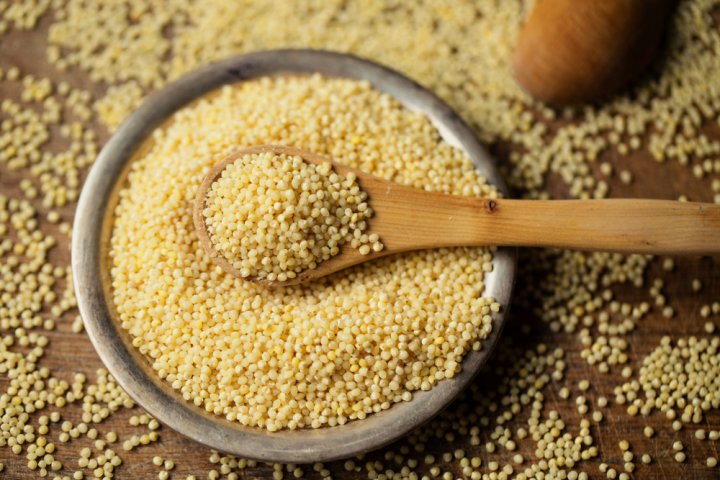
Foxtail millets are one of the first varieties of millets grown in India. It is packed with nutrients such as protein, minerals, fibre, copper, iron, and phytochemicals. It also helps to keep blood sugar and cholesterol under control. The presence of dietary fibre helps relieve constipation.
Kodo Millet
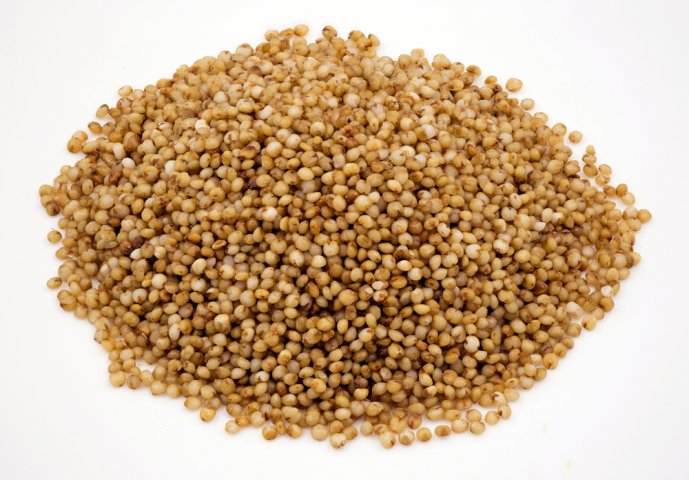
Kodo millet resembles rice in many aspects and can be taken as an alternative to rice to reap many of its benefits, including weight loss. The presence of B vitamins, as well as calcium, magnesium, zinc, and potassium, boosts immunity. The lecithin present in the millet helps in strengthening the immune system. Regular intake of this millet helps people suffering from joint and knee pain.
Little Millet
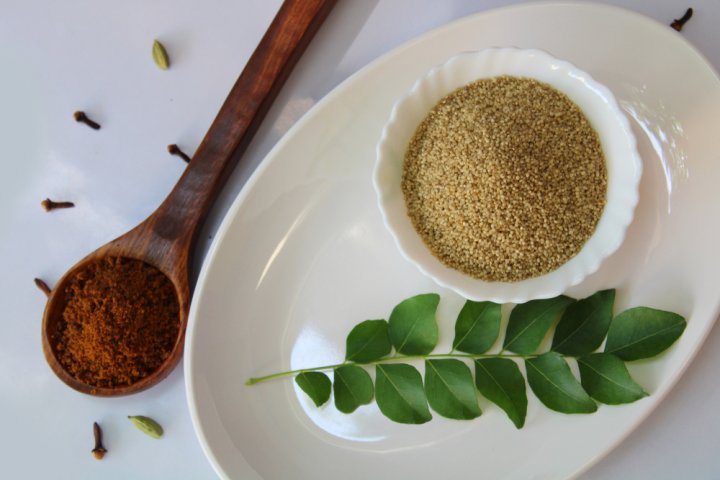
Just like the Kodo millet, it is also rich in B-vitamins, calcium, zinc, iron, and potassium. It is a well-known cure for stomach related troubles. Women with irregular periods also benefit from including little millet in their daily diet. They contain approximately 5.2 grams of fat, including unsaturated fat, which, along with fibre content, makes it ideal for those who are obese and overweight.
Barnyard Millet
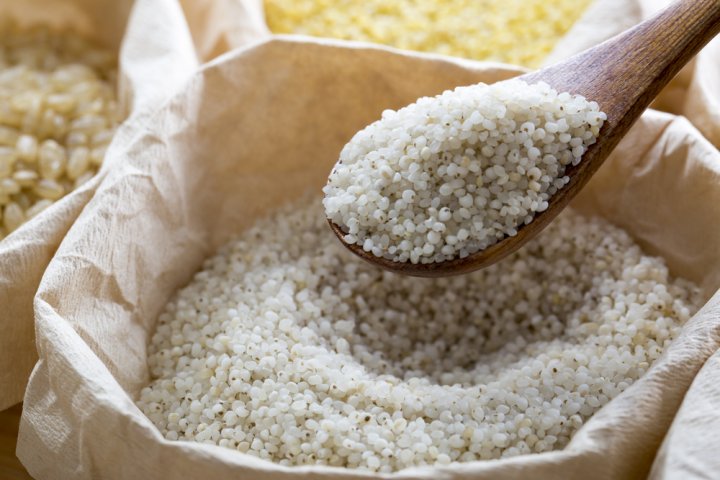
Barnyard millet is another nutrient-dense millet rich in fibre, both soluble and insoluble. It also has high amounts of calcium, protein, fat, carbohydrate, phosphorus, etc. It is also low in calories with a low glycemic index. Much like Kodo millet, it can be used as a substitute for rice.
Sorghum
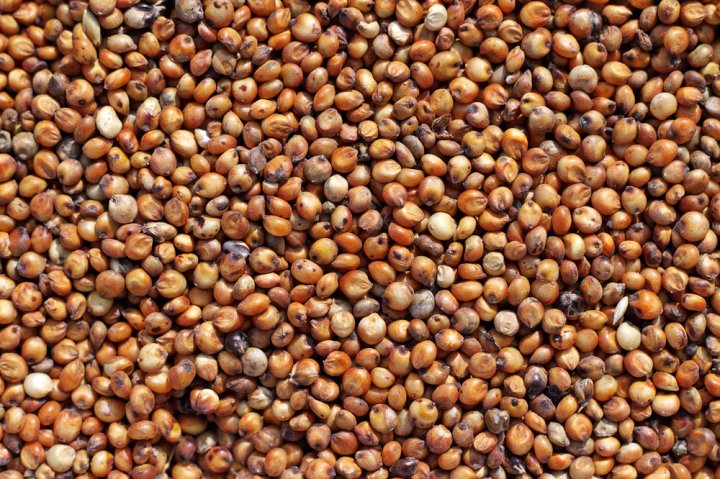
Sorghum is a powerhouse grain and is also a superfood. It contains significant amounts of B-vitamins, iron, protein, copper, potassium, magnesium, antioxidants, etc. policosanols present in Sorghum reduces the cholesterol levels in the body. If consumed regularly, it also helps prevent heart diseases, stroke, heart attack, and cancer.
Finger Millet
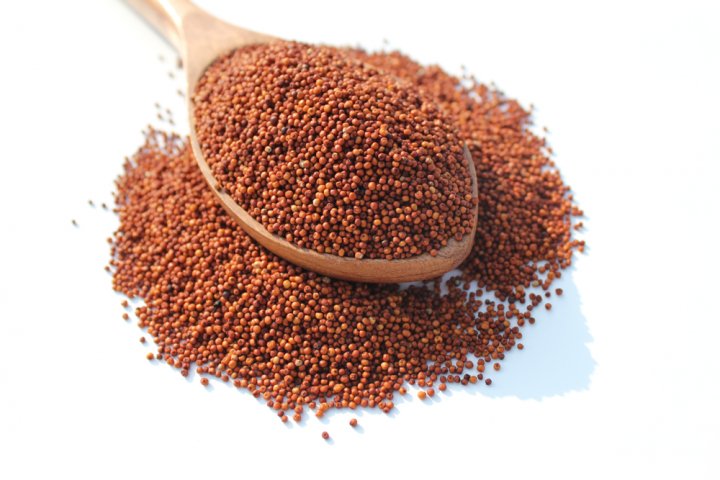
Finger millet or ragi is the most famous millet in South India. From being consumed by adults as weaning food for babies, ragi has an important place in the common man's diet. This wonder grain also helps to heal ulcers, anaemia, migraines, depression, anxiety, etc.
Proso Millet
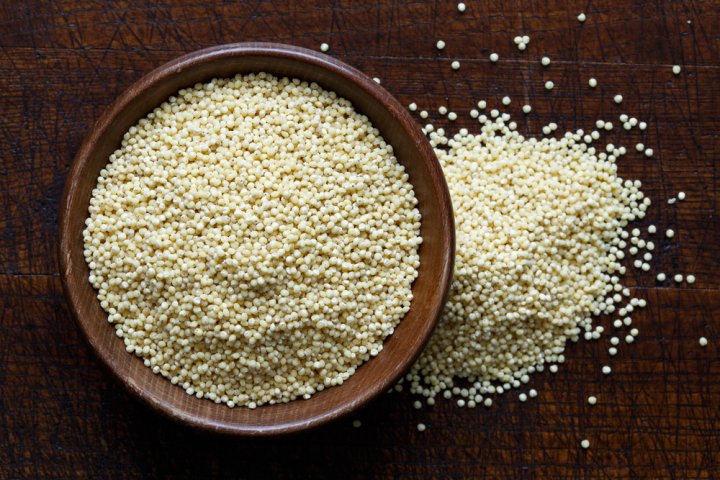
Rich in proteins, the proso millet is known for its low glycemic index, making it ideal for diabetic patients. Along with complex carbohydrate content, it also has high amounts of antioxidants, potassium, phosphorus, potassium, etc. It also helps prevent the occurrence of osteoporosis. Even with all these benefits, it is yet to enter the mainstream and is currently mostly used as bird feed.
Amaranth
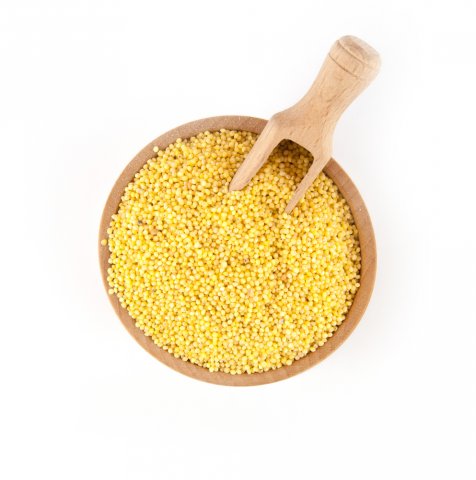
Compared to other millets, Amaranth has a high protein content. It also has calcium, carbohydrates, magnesium, and iron. It helps with greying hair and hair loss. It also lowers cholesterol and thereby reduces the risk of heart diseases.
Buckwheat

Buckwheat is the millet to intake if you are diabetic and obese. It improves cardiovascular health and protects against breast cancer, asthma, and gallstones. It also reduces blood pressure when taken regularly. Just to remind you, buckwheat is not wheat and hence gluten-free.
How to Cook Millets
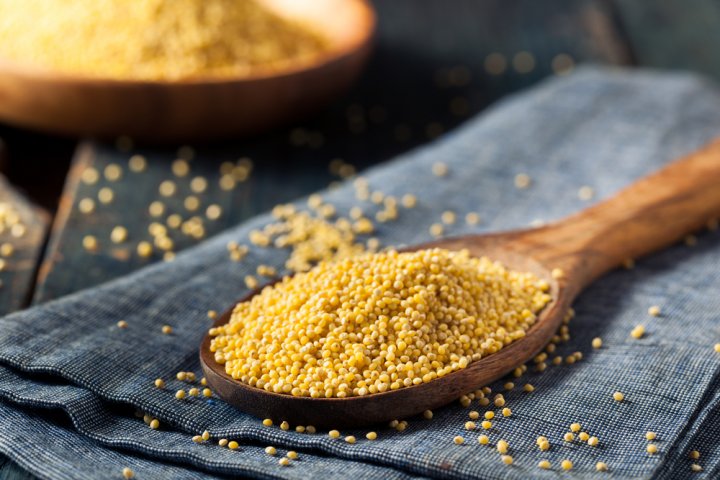
Millets can be consumed in various ways. The simple way is to prepare it as you would with rice. But, you can also make Pongal, pulao, biryani, dosa, idli, and more.
Millet rice is cooked on an open pan, rice cooker, pressure cooker, and even a microwave just like you would with rice. The cooking time and water to millet ratio may vary for the different millet. Here's a table with proportions:
- Kodo Millet - 1.25-1.5 cups
- Little Millet - 1.25-1.5 cups
- Barnyard Millet - 1.25-1.5 cups
- Foxtail Millet - 1.5 cups
- Pearl Millet - 2 cups
Ingredients:
- Millet - ½ Cup
- Oil - Few Drops
- Water
Method:
- Wash and drain the millet.
- Heat water in the pan until it boils. Add the millets and lower the flame to simmer.
- Cover the pan and cook for 5-7 minutes. Fluff with a fork after a few minutes.
- Cook the millets until all the water is absorbed.
- Switch off the flame and let it rest covered for 10 minutes.
- After 10 minutes, fluff it again with a fork.
- Serve it with any curry.
Must-Know Benefits of Millets

Though consuming millets seems to be a recent trend, in reality, it is not. People from central and south India have had millets as a part of their diet due to it being dense nutritional food.
Are you health conscious? Worried about your blood sugar? If so, millets should be a regular part of your diet. They have plenty of benefits, including weight loss and maintaining blood sugar.
- Weight Loss: Other than being low in calories, it has complex carbohydrates that keep you full for a long time. It also maintains your energy level for a long time without having to snack often.
- Fight Type-2 Diabetes: Millets have a low glycemic index, which means that regular consumption can help you prevent diabetes. Magnesium present can help regulate insulin action and also lowers the risk of diabetes.
- Maintains Digestive Health: Millets are rich in fibre, both insoluble and soluble, which help to improve the digestive process. They are also loaded with starch and are gluten-free.
- Keeps Bones Strong: Everyone needs calcium in their diet to maintain bone health. Millets like finger millet and barnyard millets are rich in calcium. Besides that, they are also rich in magnesium, which reduces bone damage and controls osteoporosis.
- Fight Heart Diseases: Millets have good fats, which then helps to prevent the excess fat from being deposited. This helps to control cholesterol and other heart ailments. The potassium content helps to improve your circulatory system.
Indian Dishes Where Millets Work Best
Foxtail Millet Khichdi
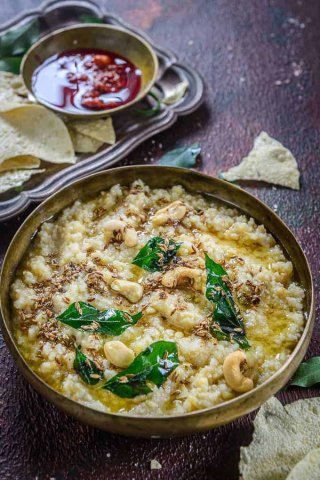
Khichdi is a delightful mix of dal and rice. Make it more healthy by replacing rice with millets. The addition of millets makes it even more delicious.
Ingredients
- Foxtail Millet - ½ cup
- Dal - ½ cup (toor or moong)
- Water - 2.5 cups
- Mixed Veggies - 1 cup
- Methi Leaves - ¼ cup
- Tomato - 1 small
- Ghee - 1 tbsp
- Ginger - 1 inch (grated)
- Jeera - ½ tsp
- Chilli Powder - ½ tsp
- Turmeric - 1 pinch
How to Make
- Wash and soak the millets.
- Heat a pressure cooker and add ghee to it. Add jeera and ginger until a pleasant aroma wafts.
- Add the veggies and the spice powders. Saute until the tomato turns mushy.
- Drain the millets; Add millets, dal, and water; close the lid.
- Pressure cook in medium flame for three whistles.
- Add more ghee, fluff with a fork, and serve.
Pearl Millet Salad
Millets can also make for a delicious salad. They are healthy, gluten-free, and easily digestible.
Ingredients
- Pearl Millet Sprouts- ½ cup
- Carrots - ¼ cup (finely chopped)
- Capsicum - 1 cup (finely chopped)
- Apple - 1 (finely chopped)
- Tomato - 1 (finely chopped)
- Green Chilli - 1 (finely chopped)
- Cilantro - 1/4 cup (finely chopped)
- Cucumber - ¼ cup (finely chopped)
- Lemon - 1
- Sugar - ½ tsp
- Salt
- Oil - 1 tbsp
- Ginger Juice - 1 tsp
- Black Pepper - ½ tsp (crushed)
- Garam Masala - ¼ tsp
How to Make
- Wash and soak the millet for 7 hours.
- Drain and let it stay in the sieve for sprouting. Wash it twice a day until it starts sprouting.
- After a day, it starts growing, and in 2 days, they will be big enough for the salad.
- Mix the sprouts with oil and microwave for a minute.
- Add all the vegetables to the sprouts and mix well.
- For the dressing mix, lemon, ginger, oil, salt, sugar, and garam masala.
- Add this to the salad and combine well.
- Garnish with cilantro and black pepper.
Pearl Millet Roti
You might have heard about wheat rotis but have you had a millet roti before. They are famous throughout central India in the states of Gujarat, Maharashtra, Rajasthan, and Karnataka.
Ingredients
- Pearl Millet Flour - 1 cup
- Water - 1 cup
- Salt - ½ tsp
- Oil - 1 tsp
How to Make
- Add water, oil, and salt to the pressure cooker.
- Close the lid and cook in high flame for a whistle.
- Manually release the pressure; add the flour and mix well.
- Close it and put the weight back on for 30 more minutes.
- Open and knead the flour a little.
- Divide the dough into balls.
- Roll them and cook on both sides just like you would do with a phulka.
Little Millet Upma
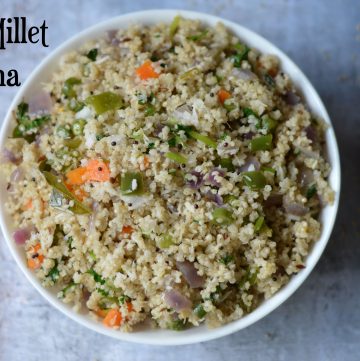
Upma may not be your favourite breakfast, but the little millet upma will be. You can make it nutritious by adding mixed veggies or skip them if that is how you like it.
Ingredients
- Little Millet - ½ cup
- Onion - 1 medium (finely chopped)
- Mixed Vegetables - ½ cup
- Coconut - ½ tbsp (grated)
- Coriander Leaves - 2 tbsp (chopped)
- Lime Juice - 1 tsp
- Salt
- Water - 1 cup
To Temper
- Coconut oil - 2 tbsp
- Curry leaves - 1 sprig
- Mustard - ½ tsp
- Jeera - ½ tsp
- Asafoetida - a pinch
- Green Chillies - 2
- Ginger - 1 inch (grated)
How to Make
- Wash and soak the millet for 15 minutes
- Heat a kadai and add oil. When hot, add everything to the "To Temper" list.
- Once aromatic, add onion and saute for a bit.
- Add all the veggies and salt. Saute until they are soft.
- Pour in the water and let it boil.
- Drain the little millet and add it to the boiling water. Add salt if needed.
- Cover and cook it in low flame for 10 minutes.
- Once all the water has been absorbed, add coconut, coriander, and lime juice.
- Mix and serve hot with chutney.
-
 समुद्र तट, प्रकृति का जादुई सौंदर्य, अनूठा आकर्षण सब कुछ है - पांडिचेरी यात्रा के दौरान वहाँ क्या देखें, क्या खाएं, कहां खरीदारी करें: पांडिचेरी में घूमने के 10 सर्वश्रेष्ठ स्थान (2020)
समुद्र तट, प्रकृति का जादुई सौंदर्य, अनूठा आकर्षण सब कुछ है - पांडिचेरी यात्रा के दौरान वहाँ क्या देखें, क्या खाएं, कहां खरीदारी करें: पांडिचेरी में घूमने के 10 सर्वश्रेष्ठ स्थान (2020)
-
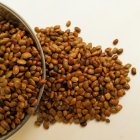 Introduce Your Family to the Multiple Benefits of Horse Gram: Check out Simple and Delicious Horse Gram Recipes and Make This Superfood a Part of Your Family's Regular Diet (2021)
Introduce Your Family to the Multiple Benefits of Horse Gram: Check out Simple and Delicious Horse Gram Recipes and Make This Superfood a Part of Your Family's Regular Diet (2021)
-
 चिया बीज का उपयोग करने के लिए शीर्ष 8 विभिन्न प्रकार के अद्भुत तरीके इसके अधिकतम लाभ प्राप्त करने के लिए। चीया बीज के बारे में आमतौर पर पूछे जाने वाले प्रश्न (2021)
चिया बीज का उपयोग करने के लिए शीर्ष 8 विभिन्न प्रकार के अद्भुत तरीके इसके अधिकतम लाभ प्राप्त करने के लिए। चीया बीज के बारे में आमतौर पर पूछे जाने वाले प्रश्न (2021)
-
 What to do When Your BP is Low? Top Home Remedies to Manage Low Blood Pressure and Why You Need to Take Low BP Seriously (2020)
What to do When Your BP is Low? Top Home Remedies to Manage Low Blood Pressure and Why You Need to Take Low BP Seriously (2020)
-
 Beauty is Hardly Skin Deep and You Must Follow the Right Diet for Glowing Skin. Try these Healthy Home Remedies and Diet Tips for Glowing Skin in 2020
Beauty is Hardly Skin Deep and You Must Follow the Right Diet for Glowing Skin. Try these Healthy Home Remedies and Diet Tips for Glowing Skin in 2020
Excessive Consumption of Millets Can Also Prove to be Bad for Your Health!
Though millets have been consumed for centuries in Asian and African countries and bring you numerous benefits, you must not over-consume them! Overeating millets can lead to a disturbance in your thyroid hormones, leading to many other body problems. Hence, as the saying goes, "Too much of anything is good for nothing," you must also consume millets moderately only!

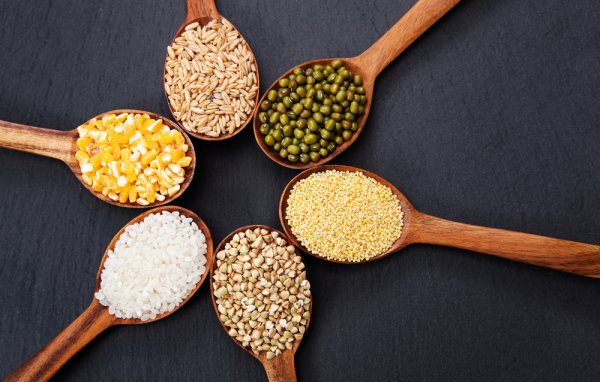
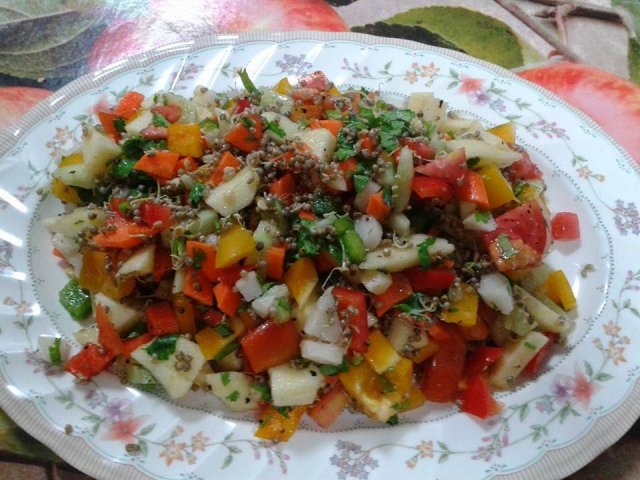
 Highlight the Best Facets of Your Incomparable Beauty: Discover the Best Face Highlighter Currently Available in India and Everything You Need to Know About Using Face Highlighters for Maximum Effect (2023)
Highlight the Best Facets of Your Incomparable Beauty: Discover the Best Face Highlighter Currently Available in India and Everything You Need to Know About Using Face Highlighters for Maximum Effect (2023)
 Forget the Blemishes and Get that Picture Perfect Flawless Radiance on Your Face: Check out the Best Foundations for Oily Skin Currently Available in India and Everything You Need to Know About Makeup Foundations (2023)
Forget the Blemishes and Get that Picture Perfect Flawless Radiance on Your Face: Check out the Best Foundations for Oily Skin Currently Available in India and Everything You Need to Know About Makeup Foundations (2023)
 Make Your Presence Felt Wherever You Go: Discover the Best Perfumes Under 2000 for Both Men and Women to Announce Your Arrival and Make Any Occasion Memorable (2023)
Make Your Presence Felt Wherever You Go: Discover the Best Perfumes Under 2000 for Both Men and Women to Announce Your Arrival and Make Any Occasion Memorable (2023)
 Protect Your Oily Skin from the Harmful Rays of the Sun: Discover the Best Gel Based Sunscreens for Oily Skin and Everything You Need to Know Before Buying One (2023)
Protect Your Oily Skin from the Harmful Rays of the Sun: Discover the Best Gel Based Sunscreens for Oily Skin and Everything You Need to Know Before Buying One (2023)
 Minor Blemishes and Wrinkles Affecting Your Confidence? Check out the Best BB Creams to Conceal Your Worries and Nourish Your Skin to Restore the Healthy, Radiant and Glowing Complexion Back Again (2023)
Minor Blemishes and Wrinkles Affecting Your Confidence? Check out the Best BB Creams to Conceal Your Worries and Nourish Your Skin to Restore the Healthy, Radiant and Glowing Complexion Back Again (2023)
